We offer a pest control service to residents and businesses in Leeds. Find out how to identify your pest, book a treatment and how much this will cost.
Whether we can treat your pest, and if so, how much this will cost, depends on the type of pest problem you have. Please use the information below to make sure you identify your pest correctly before requesting a treatment.
Unlike other pest control services, we won’t charge you per visit. The price you pay includes all the visits we need to make to eradicate the current pest problem* (excluding bedbugs).
Ants
We can help with black garden ants.
Black garden ants are a nuisance pest, but not a risk to human health.
Signs of garden ants
- Garden ants swarm every year as part of the colony flies away to find a new place to nest. This is natural, and should be over with 48 hours
- Nests are always found in garden soil or under floors are likely to be visible inside and outside the property
- Check paved areas outdoors – these make an ideal place for garden ants to live
- A trail of ants may be seen moving to and from the nest site
- They are often seen around food or spillage
Treating an infestation
Before requesting treatment, you may want to attempt to treat an infestation at home with aerosols, insecticidal dusts or powders from a garden centre or DIY store.
Try to catch an ant on a piece of tape and send it to us for free identification before booking a treatment.
Charges for treatment
Ant treatment costs £66 (includes VAT).
Bedbugs
Bedbug bites cause redness, swelling and itching. Some people may be at risk of an allergic reaction to their bites.
Signs of bedbugs
- adult bedbugs are roughly the size of an apple pip, and after biting they will appear red or purple in colour
- they may be seen mattress seams, bedding, sockets and cracks in walls, on curtains or along skirting boards and carpet edges
- look for dark brown stains on bedding, especially around mattresses and bed frames, as bedbugs leave droppings after every meal
- any bites will be swollen, red and itchy, and may appear in clusters
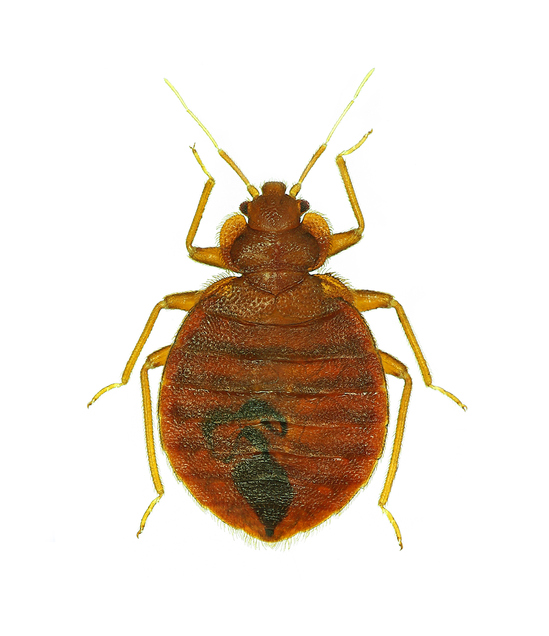
Treating an infestation
Treatments for bedbugs can be complex. New control methods are being tested by professionals all the time.
For these reasons we do not recommend that you try and treat an infestation yourself. Treatments are extremely difficult and even professionals can struggle to control the problem completely.
Charges for treatment
Bedbug treatment costs £165 (includes VAT).
This covers up to three treatments maximum.
The products we use to treat bedbugs have residual effects and continue to work for several weeks after the treatment has taken place.
To ensure our technicians have the best working environment to eradicate the issue. Prior to your appointment, please ensure all rooms where bedbugs are present are de-cluttered, tidied, with items of clothing and bedding hot laundered, dried and safely bagged.
Bees and wasps
We do not offer a treatment for bees as we recommend that they should be left alone due to their value to the environment, and the fact that bee numbers are dropping all the time.
It can be difficult to tell the difference between bees and wasps. If you have a bee swarm, or a honey-bee nest, you may want to contact your local bee keeper for further advice.
Use the guidance below to help check whether you have bees or wasps before requesting treatment.
You will need to pay a callout charge if the insects are bees.
Bees
There are several types of bees which you may notice.
Masonry and mining bees:
- are solitary bees, which don’t have a nest with others
- are unable to sting, and are not a threat to our health
- have a hairy body that appears brown and orange. Compared to a wasp they are fatter and shorter in the body
- breed early and are active from March until the end of June
- lay their eggs small passages in soft mortar of walls or occupy existing holes (masonry bees) or in sandy soil (mining bees)
Bumblebees:
- are large, hairy, black and yellow, with a bumbling and clumsy flight
- will only sting if they are handled roughly or threatened
- create nests which last one summer – these are covered in moss and usually located on the ground or under wood piles or sheds
- usually die off by the end of September
Honey bees
Honey bees have dark brown and black stripes unlike wasps which are bright yellow and black. They are the only bees that swarm, and are usually non-aggressive when swarming and will only react if they believe the swarm is under threat.
Honey bee swarms:
- happen when the population increases and a group of worker bees leave to form a new colony with a queen
- can appear as a mass of insects in mid air or gathered on a surface like a branch or fence, clinging to each other
- are unlikely to move on if they are still present after a week
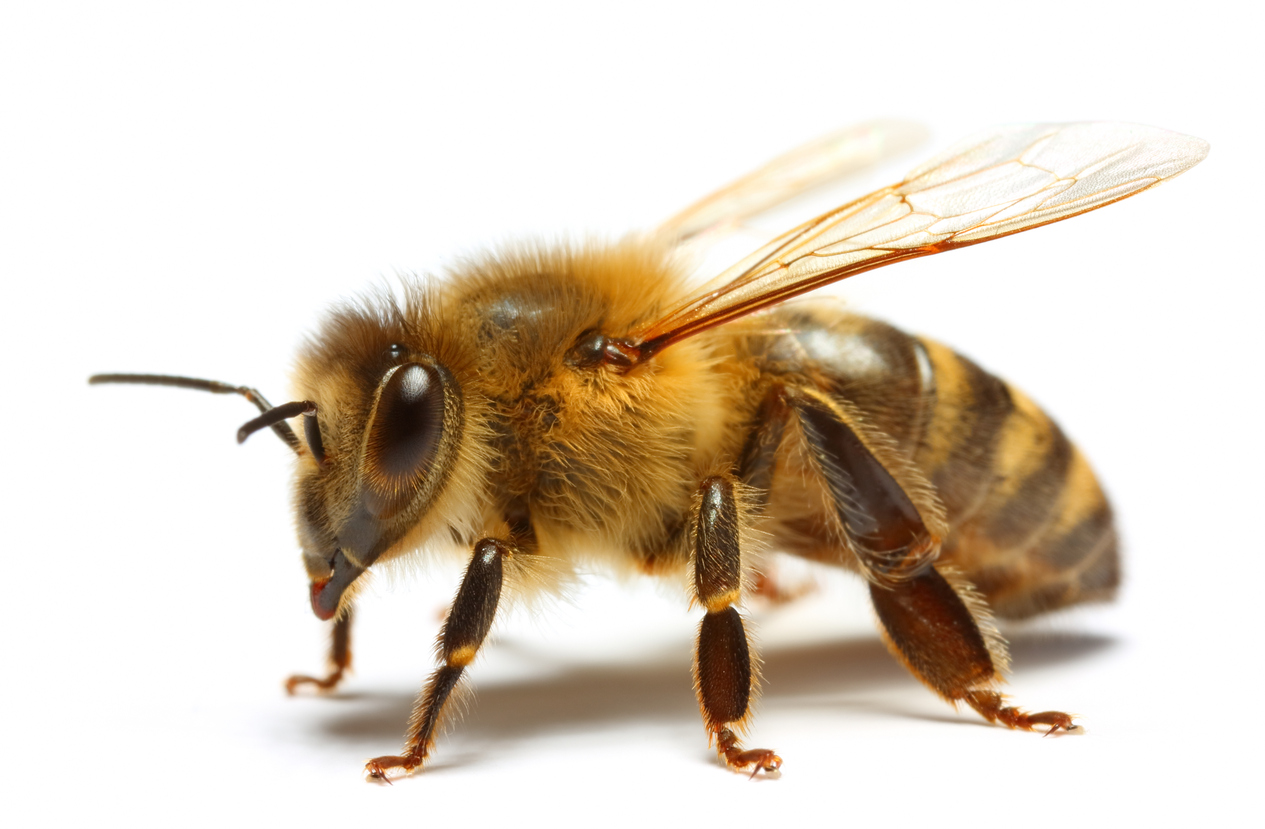 Honey bee
Honey bee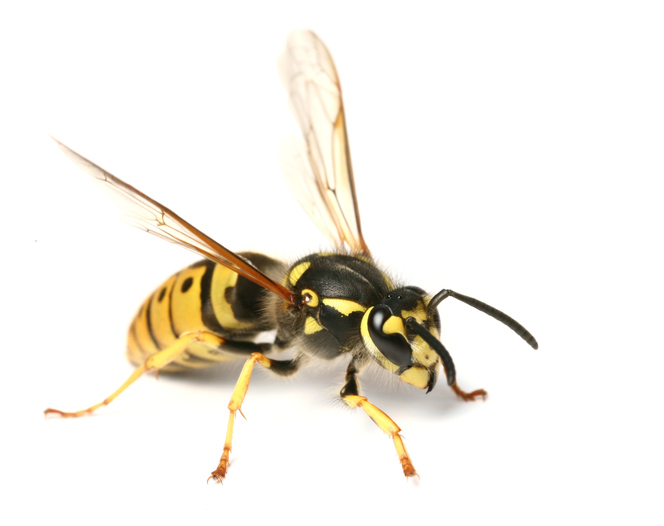 Wasp
Wasp
Wasps
Wasp stings can be dangerous for the elderly and people who are allergic to them, so treatment should be requested if the location of a nest near your home, business or garden is posing a risk to people.
Signs of wasps
Wasps can easily be confused with other flying insects, but have bright yellow and black “warning” stripes.
Sometimes a nest can be seen. This will usually appear as a grey ball which can range from the size of a golf ball to the size of a car tyre. If no wasps can be seen around the nest, treatment will not be needed, as they build a new nest every year and never return to an old one.
Signs of an active wasp nest may include:
- lots of wasps entering and exiting one location
- wet patches on walls or ceilings if a nest is in your loft or wall cavity
- a dull buzzing noise
Treating a wasp nest
You can request treatment from us, or treat a nest yourself.
For health and safety reasons, we recommend that you don’t try to treat nests above head height yourself. However, you can treat nests that are below head height and easily accessible.
Insecticide (dusts and aerosols) can be bought from supermarkets and most garden centres – please follow the instructions. You may wish to wear protective clothing to avoid being stung.
Charges for treatment
Wasps:
Wasp treatment costs £66 (includes VAT).
On the rare occasion that we have attended and may not be able to effectively treat a wasp nest (extreme height, dangerous access) a “call out” fee (£30) would be the only charge, the remaining £30 being refunded to you.
Biting insects
Problems with itchy or bitten skin can be difficult or impossible to solve with pest control treatment. This can depend on the cause of the bites or irritation.
If you or others living at your house are having problems with insect bites and you can’t find an obvious cause for this (for example, being able to see and identify other signs of fleas, bedbugs), we recommend that you make an appointment with your doctor.
Carpet and fur beetles
Carpet and fur beetles are not a risk to our health, but can cause damage to natural fibres and fabrics such as wool, leather and silk.
Carpet beetles are small and round, and roughly the size of a ladybird. They are dark brown or black with patches of white or yellow. Fur beetles are the same size, but have a single white spot on each wing.
Signs of carpet and fur beetles
- you may see adult beetles or the larvae - adults will sometimes be found in groups on windowsills as they are attracted to daylight
- bird nests—if you have bird nests in your loft this may be where the beetles are coming from
- damaged carpets and clothes—even textile products with a small percentage of natural fibre can get damaged
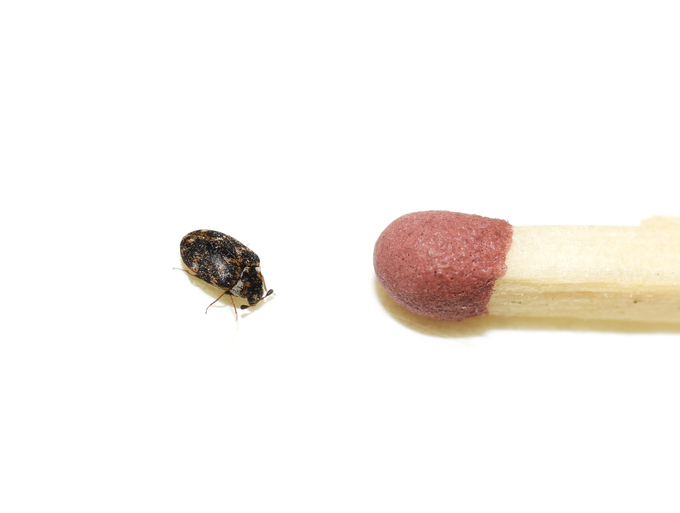
Treating an infestation
You can request treatment from us, or treat the problem yourself.
Insecticide can be bought from your local DIY or garden centre. Please follow the instructions carefully.
Charges for treatment
Carpet or fur beetle treatment costs £66 (includes VAT).
Clothes moths
Clothes moths can be a nuisance, but are not a risk to our health.
Signs of clothes moths
You may notice:
- damage to clothes and soft furnishings
- larvae cases or moths in wardrobes and cupboards
- webbing which looks like spider webs, and may contain pupal cases
- small piles of dust caused by their damage at the bottom of the wardrobe or nearby on the ground
Charges for treatment
Moth treatment costs £66 (includes VAT).
Cockroaches
Cockroaches can be a risk to our health, as they can transfer bacteria onto food products and surfaces.
Signs of cockroaches
Cockroaches normally come out at night. However, if an infestation is large you may be able to see them at any time during the day. Watch for insects scuttling away to hide when you enter a room at night. Use a torch to check behind units, refrigerators and cookers to look for the insects, their faecal matter and egg cases.
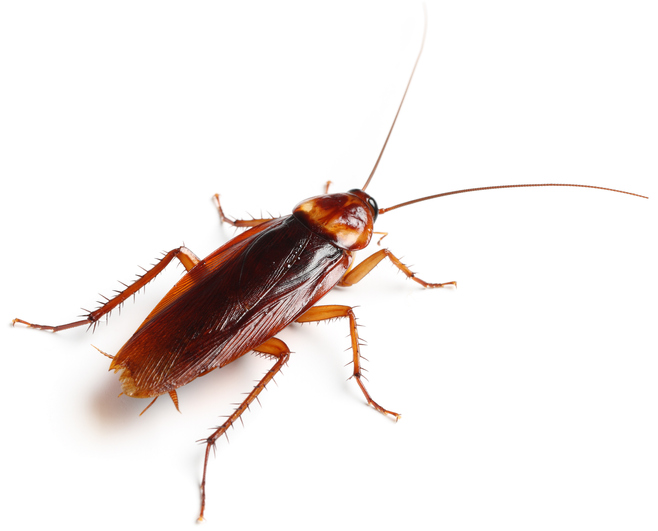
Treating an infestation
We recommend that treatment is done professionally, as pesticides need to be used.
We will make a minimum of three visits during treatment, even for minor infestations. During these visits the contractor will lay insect monitors in the property and use insecticidal gels and sprays.
Charges for treatment
Cockroach treatment costs £165 (includes VAT).
Fleas
Flea infestations can spread quickly. Most eggs fall off pets and hatch wherever they are in the house, usually where the pet sleeps.
Signs of fleas
You may notice the following problems:
- you may see fleas in your home, on yourself or on your pets
- bites will show as a swollen itching spot with a single puncture point at the centre. They are usually found where clothes are in close contact with the body, for example: ankles. Bites often appear in clusters or lines of two bites, and can be itchy and inflamed for several weeks
- pets scratching more than usual, and on inspection you find fleas or small black flecks
Treating an infestation
You may be able to get rid of fleas yourself using flea treatments from your local vet or DIY centre.
In order to remove fleas completely, a professional treatment may be needed.
Charges for treatment
Flea treatment costs £99 (includes VAT).
Foxes
We do not offer a pest control treatment for foxes as they do not usually cause any problems. However, there are some things you can do to deter them from coming onto your property:
Do not feed them
Feeding foxes means they won’t roam around for food, making their territory much smaller. This will lead to more foxes coming into your area. They are then more likely to dig and leave droppings in gardens.
Secure your rubbish
Foxes will scavenge food from bin bags if they’re not placed in a secure container. Put your bags in a secure bin and close the lid.
Keep your garden clean and tidy
Foxes like untidy, overgrown gardens because they provide good shelter. Clearing your garden will make it less attractive to foxes. Tidy away things like old gardening gloves and shoes, which can smell very interesting to foxes.
Remove fox scents
Foxes repeatedly foul the same areas in gardens to mark their territory. Cleaning concrete areas with chemicals such as bleach will only temporarily mask the smell. It does not remove it, and the fox will still foul there.
Instead, use either a biological washing powder mixed with hot water, or an enzyme-based product from a vet. Always use gloves when removing fox waste.
You may have to persistently wash the same spot, sometimes every day for a fortnight, but usually the fox will stop fouling in that area over time.
Ladybirds
Ladybirds will usually only be active in houses for a few weeks in the autumn as they get ready to hibernate.
We do not offer a pest control treatment for ladybirds as they do not usually cause any problems. However, there are things you can do to stop ladybirds coming into your home.
Preventing an infestation
- Fill any small holes or gaps around doorframes and window frames to stop them getting in.
- Wipe down the areas where ladybirds have been, such as windows, window frames and door frames with water and mild detergent. Doing this regularly, especially from early spring onwards will help. This removes any scent markings they have left, and will prevent other ladybirds being attracted to these areas.
Mice
We offer a service to treat mouse infestations in domestic properties. Mice can be a risk to our health, as they eat and leave droppings and urine on food which can cause food poisoning.
Signs of mice
- Droppings – mice produce up to 80 droppings a day and these resemble small black grains of rice, often the first sign of an infestation
- Damage – mice will gnaw food packaging
- Smell – there is usually a distinctive odour in areas where mice live in large numbers
- Nests – collections of gnawed materials built into a ball
- Noises – in voids such as wall cavities, in lofts or beneath the floor
- Smears – black greasy marks may be lefty by mice running over prominent objects over a long period of time
Charges for treatment
Mouse treatment costs £138 (includes VAT).
Moles
Treatment for a mole infestation is only available for commercial businesses.
Pigeons
Treatment for a pigeon infestation is only available for commercial businesses. However, there are steps you can take to treat an infestation:
- Where pigeons have entered a property and are using it to roost, any entry holes will need to be blocked to stop them getting in - we recommend that you seek professional assistance to block any holes, as this can involve working at heights
- If pigeons have been roosting on your property, then an anti-roosting system should be installed, such as netting, wires or spikes
Please email
pests@leeds.gov.uk for any further details or advice.
Rats
Signs of rats
If you see any of the following then rats may be present:
- Droppings - these are cigar shaped and around 1cm in length
- Damage - rats have to gnaw constantly and as a result may cause damage to belongings, structures, pipes and electric cables
- Smears - black greasy marks maybe left by rats running over prominent objects over a long period of time
- Holes – may be seen in the garden, 5-7cm wide with a smooth, shiny entry, indicating an active burrow
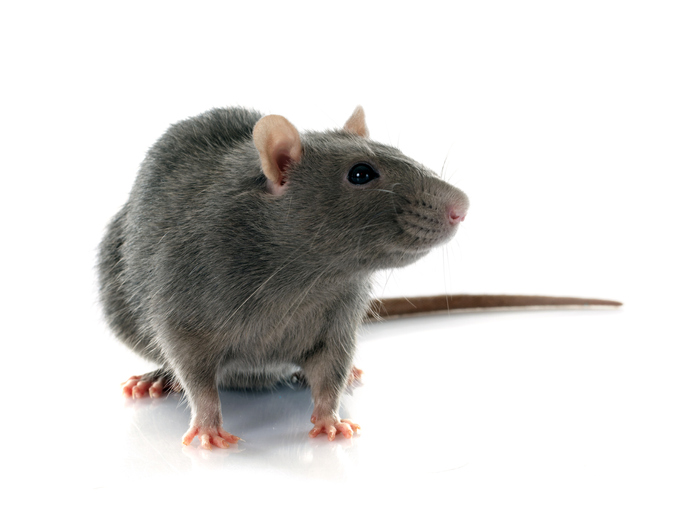
Preventing an infestation
To ensure a rat infestation in your garden does not enter your home, you should repair any external structural faults, including:
- gaps beneath external doors – draught excluding brush or bristle strips can be attached to the door or the threshold can be renewed or raised
- holes surrounding pipes – these can be blocked with wire wool and then filled with cement or expanding foam
- damaged or old air vents - vents with holes larger than 2.5cm should be replaced, repaired or covered with fine mesh – do not block the vents entirely
Charges for treatment
Council tenants:
Treatments are free for Housing Leeds tenants. You must provide the name of your housing office and your tenancy number when requesting this service.
If we attend and find the pest to be mice and not rats, a charge of £125 (includes VAT) will apply. Please speak to your housing office or be prepared to pay for the treatment if this is the case.
Private or housing association tenants and homeowners:
Rat treatment costs £138 (includes VAT).
Silverfish
Silverfish are not a risk to our health, and don’t usually cause any nuisance.
Signs of silverfish
Silverfish are usually found in moist or damp areas such as kitchens but are also found in bathrooms, under floors and basements. You might notice:
- insects moving rapidly when lights are turned on in a dark room
- insects trapped in sinks or baths
- damage to wallpaper or books
- scales, droppings or yellow stains on paper or fabrics
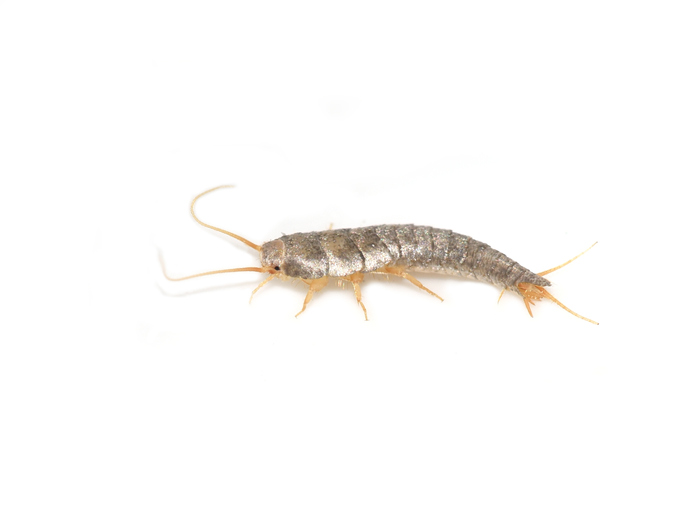
Treating an infestation
You can request treatment from us, or treat the problem yourself.
Things you can do to control and treat an infestation include:
- treating the area for damp - a dehumidifier will also help dry it out
- removing any stacks of paper or clothing
- sealing holes, cracks and gaps in affected rooms to restrict their movements to other areas
- using insecticides for crawling insects – these can be purchased from DIY and Garden centres
Charges for treatment
Silverfish treatment costs £66 (includes VAT).
Squirrels
Grey squirrels often live and breed in roof spaces. They use loft insulation and other materials to create large nests.
They can cause damage by gnawing facia boarding and roof joists, stripping electrical wiring and damaging stored belongings. This increases the risk of fires, and repairing the damage can be costly.
Signs of squirrels
- Noises in your loft space
- Droppings shaped like a raisin and ¼ inch
- Damaged bird feeders
- Damaged facia boards and electrical wiring from gnawing
- Loft insulation dragged into piles
Treating an infestation
Our service includes:
- Trapping squirrels in the loft – Cages or spring traps may be used (we do not use poison)
- Daily visits to remove any catches, reset and re-bait traps
- Advice and recommendations to help prevent future problems
Charges for treatment
Squirrel treatment costs £121 (includes VAT).
Woodworm
Woodworm can cause significant damage to wood in a house. If it infests the timbers that support the house, it could cause structural damage.
Signs of woodworm
- Fresh exit holes in timber
- Fine powdery dust around holes or on the ground
- Crumbly edges to boards and joists
- Weak and damaged flooring or wood (the floor might give way in some areas which can indicate a serious problem)
- Dead beetles collecting on the window sills or seen flying about in May or June
Treating an infestation
We don’t offer a treatment for woodworm. If you suspect a woodworm problem, we recommend that you seek professional advice by calling the British Property Care Association on 0870 121 6737. As infestation may be worse than it appears, and treatment could be required for inaccessible areas.
Request pest treatment
Use our online form to request pest treatment.
Please inform us, if you or anyone in your household has tested positive for COVID-19, has any symptoms or are self-isolating.
Due to a heavy workload, the current timescale for contact following a request is within 7 to 10 working days.
Businesses
Businesses can arrange for a free survey and quotation for the treatment of any pest.
We perform one-off treatments as well as fixed-price annual contracts. Our annual contract involves working closely with you to provide a bespoke service, controlling pests through regular pro-active site inspections and reports, which are backed up with a prompt call out service for emergencies.
Our annual contract also includes:
- regular written reports
- pest monitors installed throughout the site (locations are mapped)
- a fixed price for the term of the contract
- an information binder (containing summary of visits, contract specifications, site risk assessments, pesticide safety data and useful contact numbers)
The service is tailored to suit the environment of your business and your budget.
Please complete the online quote request form below and an officer will then be in touch to arrange a site visit and provide a quote for the works required.
Request a pest control contract quote external link
